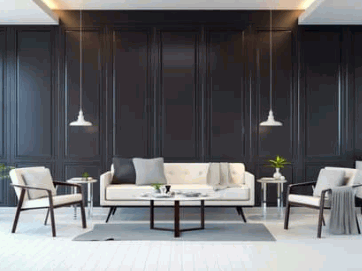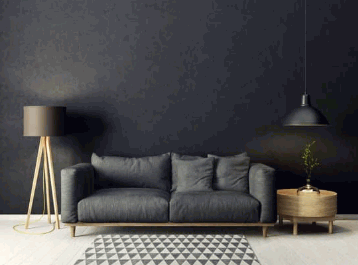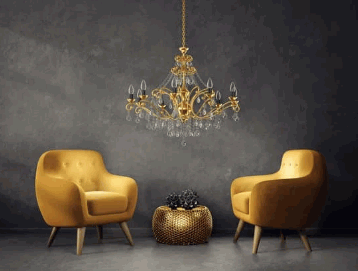Clean lines, bold colors, and minimalist decor are key for modern interior design. Straight edges and smooth curves bring simplicity and orderliness. Vibrant hues create visual interest and make a statement. Unique textures add sensory experiences. Lighting sets the mood and highlights features. Technology further enhances modernity. Together, these elements create a harmonious environment that exudes sophistication.
Definition Of Contemporary Interior Design
Contemporary interior design is a style that values clean lines, simplicity, and functionality. It incorporates modern elements to create a sleek and sophisticated look. Neutral colors, such as white, gray, and beige, are often used to create a sense of calmness and simplicity. Open floor plans and large windows are popular features of this design approach, letting in plenty of natural light. Furniture is usually minimalistic and sleek, with smooth surfaces and straight edges. Common materials include glass, stainless steel, and wood. The goal is to make a space that is fresh, uncluttered, and timeless.
This style also takes elements from other styles. Vintage or antique pieces can be used to add character. Technology is often included to improve convenience and aesthetics. Smart home devices, integrated sound systems, and automated lighting controls can all be used.

Characteristics Of Contemporary Interior Design
Contemporary interior design is special for its fresh, modern vibe. Its key features are:
- Clean lines and minimalism. Less is more: open spaces, clear surfaces, and furniture and decor kept to a minimum.
- Neutral colors like white, gray, beige, or black make the focus of the furnishings and architecture.
- Incorporating natural materials like wood, stone, and metal.
- Mixing old and new for an appealing contrast.
Lighting also matters. Natural light is maximized, and artificial lighting should match the style.
Pro tip: Opt for simplicity and minimalism. Clean lines, neutral colors, natural materials, and a mix of old and new.
Elements Of Contemporary Interior Design
Contemporary interior design uses modern concepts, materials, and techniques to create a unique atmosphere. Clean lines, a neutral color palette, open spaces, natural light, and functional furniture are essential elements. Sustainable materials align with environmental responsibility. Choose minimalistic accessories to enhance the visual impact without overwhelming the space. Experience the transforming power of contemporary interior design!
Check out: What Are The Elements Of Contemporary Design

Popular Contemporary Interior Design Styles
Nowadays, contemporary interior design styles are everywhere. This trend combines modern and traditional elements, making it look elegant and sophisticated. Let’s take a look at the different styles and their characteristics.
Minimalist style is all about simplicity, clean lines, and minimal clutter. It has a calming effect.
The industrial style has an unfinished look with exposed brick walls and metal accents.
Scandinavian style uses natural materials, neutral colors, and minimalist furniture for a cozy yet elegant feel.
Mid-century modern style incorporates organic shapes, bold colors, and simplistic designs from the mid-20th century.
Apart from these, there’s the Bohemian style that has eclectic patterns and vibrant colors.
Coastal style features light hues and nautical elements.
Rustic style has reclaimed wood and earthy tones, giving it a warm atmosphere.
Do you know why contemporary interior design styles are so popular? It’s because they allow you to express your personality while creating functional and aesthetically pleasing spaces.
Tips For Incorporating Contemporary Interior Design In Your Home
Incorporate contemporary interior design into your home for a modern and stylish haven! Here are some tips:
- Opt for furniture with sleek lines and clean designs.
- Choose neutral colors such as whites, grays, and earth tones.
- Add pops of color with accessories like pillows, rugs, or artwork.
- Integrate natural materials like wood or stone.
- Use ample lighting with simple fixtures, like recessed lights or pendant lamps.
- Decorative elements should be used sparingly.
For further enhancement:
- Avoid bold patterns or excessive ornamentation.
- Maximize natural light with large windows and mirrors.
- Invest in sleek storage solutions.
Follow these tips to create a contemporary interior design that is both stylish and practical. Neutral colors make the room open and clean, while pops of color add personality. Natural materials bring visual interest and texture. Ample lighting enhances the ambiance. Finally, smart storage solutions ensure a streamlined look.

Examples Of Successful Contemporary Interior Design Projects
Successful modern interior design projects flaunt unique and inventive ideas that switch up spaces into cutting-edge havens. Here are some remarkable examples:
| Project | Description | Location |
|---|---|---|
| Loft Living | Open-plan with industrial-style decor | NYC |
| Beach Escape | Beachy design with natural elements | Malibu, CA |
| Urban Sophistication | Sleek and minimal interiors in a hectic city | Tokyo, Japan |
These projects display the core of contemporary interior design. Merging functionality and aesthetics to create beautiful spaces. Straight lines, neutral color palettes, and the usage of natural materials are regular features that bring out the overall charm.
For successful modern interior design, adding statement pieces that become the centerpiece of the room is key. This could be a vibrant artwork, a specific furniture piece, or a captivating lighting fixture. These items bring in visual interest and add to the general design plan.

Conclusion
We discussed the key elements and principles of modern design. Clean lines, minimalism, and natural materials are important. Color palettes and lighting choices can impact the aesthetic.
Functionality is crucial in contemporary design. Smart tech, multifunctional furniture, and efficient storage can make a space more practical. Sustainable materials and practices can contribute to an eco-friendly approach.
By evolving and experimenting, we can push the boundaries of design. This lets us create unique and inspiring spaces that reflect who we are and how we live.

